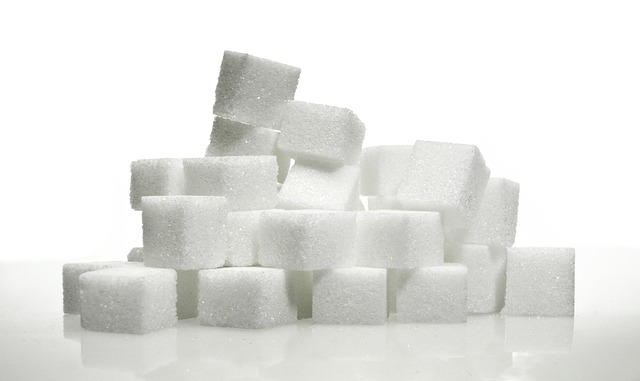Let’s learn more about the Microbiome Diet, starting with its pros and cons. The microbiome diet, like all diets, has pros and cons that you should be aware of before committing to a particular eating plan.
Here are the Pros And Cons of Microbiome Diet
Pros
- Encourages the consumption of healthful foods
- Enhances intestinal health
- Sugar consumption is restricted.
Cons
- Restrictive
- Expensive
- Health claims that are unsubstantiated
Pros
Encourages the consumption of healthful foods: Whole, nutrient-dense foods, including fruit, berries, vegetables, seafood, nuts and seeds, and lean protein, are encouraged in the microbiome diet. All of these food groups are high in vitamins and minerals and have anti-inflammatory qualities.
Enhances intestinal health: Fruits and vegetables on the microbiome diet, in particular, are gut-friendly foods. Prebiotic and probiotic properties can be found in asparagus, leeks, onions, artichokes, sauerkraut, kimchi, radishes, avocados, citrus fruits, and other foods. To attain optimal gut health, prebiotics and probiotics function in tandem.
Limits sugar consumption: Excess sugar consumption can be a cause of many chronic diseases and create immediate symptoms such as fatigue, difficulty concentrating, and mood swings. The microbiome diet may assist in enhancing your day-to-day functioning by decreasing your sugar intake.

Cons
When considering the microbiome diet, there are numerous obstacles to be aware of.
Restricted: The microbiome diet can be extremely restricted, particularly in the early phase. Most people do not need to eliminate as many foods as the first phase needs. Corn, soy, eggs, grains, legumes, and dairy can all play an important role in most people’s diets.
Expensive: Organic foods, free-range meats, and cage-free eggs are encouraged in the microbiome diet. These foods can be significantly more expensive than their typical counterparts. Therefore money may be a barrier for many people following the microbiome diet.
Unsubstantiated assertions: Some health claims about the gut are overblown and have not been supported by independent research.
Is the Microbiome Diet a Good Option for You?
The fundamental principles of the microbiome diet are similar to those of other well-established diets that may benefit gut health. The Mediterranean diet, for example, emphasizes fruits, vegetables, whole grains, and healthy fats, with a special emphasis on herbs. Many of the Mediterranean diet’s entire foods are microbiome-friendly.
Phase three of the microbiome diet is the most consistent with federal dietary recommendations. Many healthful foods advised for a balanced diet are eliminated by the limits of phases one and two. The United States Department of Agriculture recommends eating a variety of fruits, vegetables, grains, dairy, and protein.
The federal standards encourage eating a variety of vegetables, including dark green, red, and orange vegetables, beans, peas, lentils, starchy vegetables, and others.
- Fruits, particularly whole fruit
- Grains, with at least half of them being whole grain
- Dairy alternatives include fat-free or low-fat milk, yogurt, and cheese, as well as lactose-free versions and fortified soy drinks and yogurt.
- Lean meats, eggs, and poultry; seafood; peas, beans, and lentils; and seeds, nuts, and soy products are all good sources of protein.
- Vegetable oils and oils found in foods such as fish and nuts are examples of oils.
- Limit your consumption of saturated fats, trans fats, and added sweets.
- Salt and dietary cholesterol restrictions
What to Avoid
Avoiding high-sugar, fried, and processed foods is a guaranteed approach to boost your health and vigor. However, knowing how many calories you consume each day in order to meet your goals—whether you want to lose, maintain, or gain weight—is beneficial for weight reduction.
Most people require approximately 1,500 calories per day for weight loss and approximately 2,000 calories per day for weight management, but these figures vary depending on an individual’s age, height, weight, and activity level.
Many nutritious foods suggested by federal dietary standards are eliminated in phase one of the microbiome diet. Experts do not advocate this diet because of the tight restrictions. However, phase three of the plan adheres to USDA recommendations for a well-balanced diet.
Health Advantages
The microbiome diet as a whole has not been thoroughly researched in terms of effectiveness, efficacy, and safety. However, there is some evidence that it can be advantageous.
Health Preservation
A good diet is associated with a healthy gut, and a healthy gut is associated with a generally healthy body, according to research.16
Loss of Pounds
The microbiome diet may help you lose weight because it demands you to eat largely fruits, vegetables, and lean protein. However, even if you eat nutritious meals, it is still possible to consume more calories than you expend, which adds to weight gain.

Disease Control
Some of the foods with microbiome-friendly properties also have disease-protective properties. Higher consumption of nuts and seeds, for example, has been linked to a lower incidence of coronary heart disease, gallstones (in both men and women), and diabetes in women. There is also some evidence that it may help with hypertension, cancer, and inflammation.
Health Dangers
The microbiome diet may not offer the nourishment that most people require for optimum health, especially during the restrictive phases.
Imbalances in Nutrients
For the first 21 days of the microbiome diet, many healthful foods such as whole grains, dairy products, eggs, starchy fruits and vegetables, and most legumes are avoided. While these restrictions are only temporary, they may cause nutrient imbalances.
Nutritionists advocate bypassing the first phase because it is unlikely that you will need to eliminate all of the foods it prohibits. Instead, perhaps starting with a more inclusive version, possibly with the second phase, might be beneficial.
Even starting with the third step may be a significant change for many people. For example, if you currently consume a lot of artificial sweeteners, packaged foods, sodium, fried meals, and sugar, you may benefit from simply following phase three of the microbiome diet, which is considerably more nutritionally balanced than phases one or two.
Eating Disorder Can Develop from following Microbiome diet
Some rigorous diets, such as those seen in phase one of the microbiome diet, might lead to an unhealthy fixation with food. As a result, the microbiome diet may not be a good choice for people who have had or are at risk of developing an eating disorder.
To Conclude the Microbiome Diet
You may naturally help to balance your gut bacteria by following phase 3 of the microbiome diet. Focusing on fresh fruits and vegetables, lean protein, healthy fats, and fermented foods is good for you, anyway. However, it should be noted that additional research is required to validate the complicated interaction between diet, the gut, and general health.
Suppose you have significant stomach discomfort or other symptoms while on the microbiome diet; consult with a doctor or qualified dietitian who can assist you in making individualized dietary choices.
While we do not support fad diets or unsustainable weight loss approaches, we do give the facts so that you can make an informed decision that best suits your nutritional needs, genetic blueprint, budget, and goals.
If weight loss is your aim, keep in mind that reducing weight isn’t always synonymous with being in optimal health, and there are many other methods to achieve health. Exercise, sleep, and other lifestyle factors all have a significant impact on your overall health. The best diet is one that is well-balanced and fits your lifestyle.
